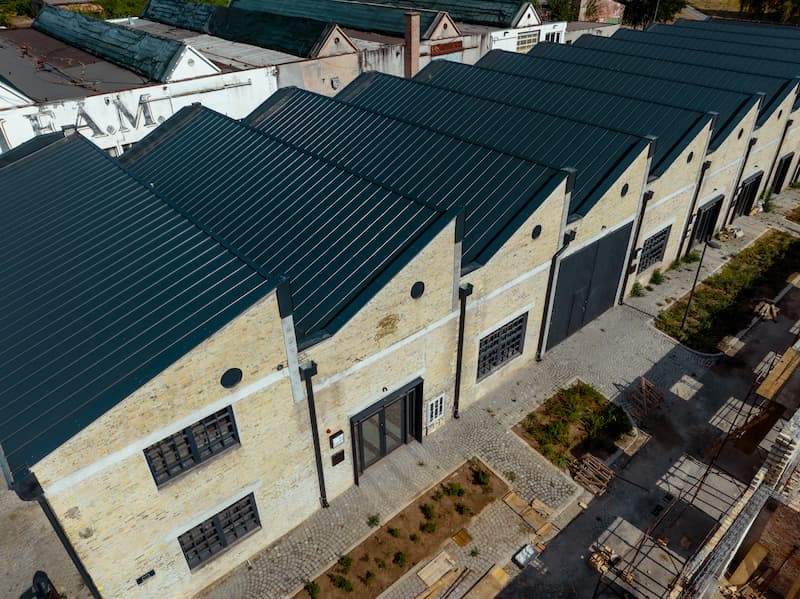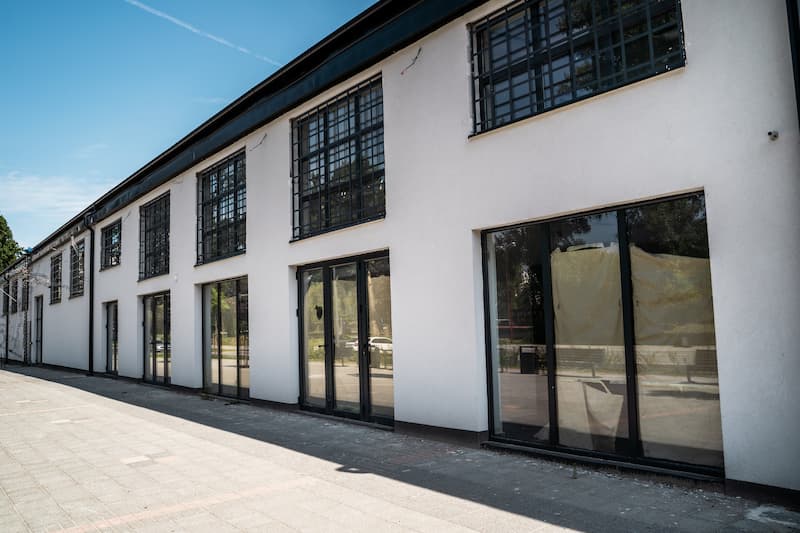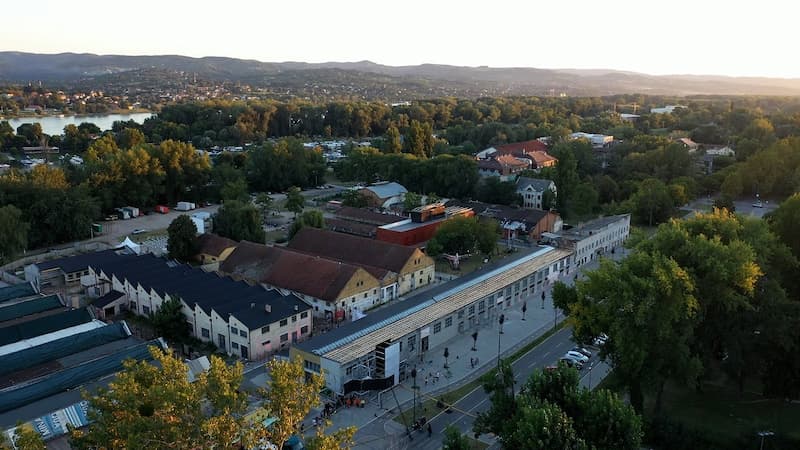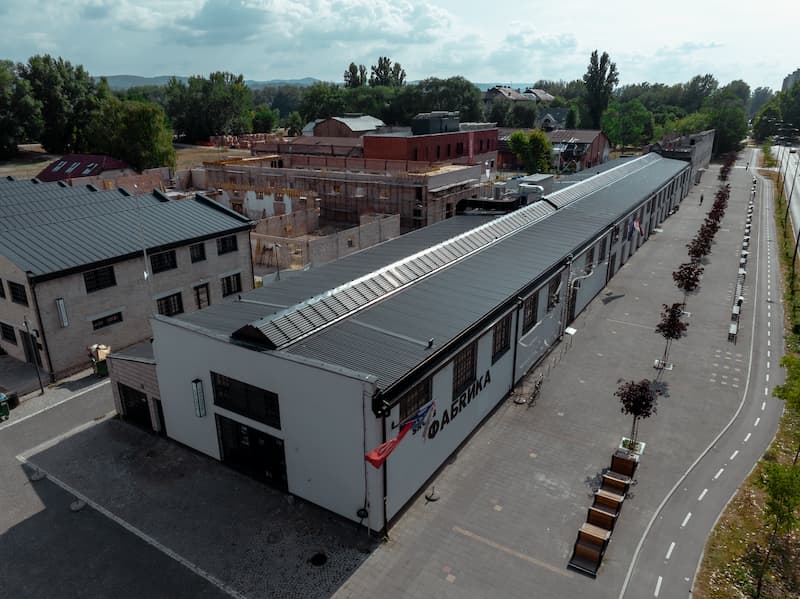The rich industrial heritage of Novi Sad consists of the former factories for the production of tools in the so-called Chinese Quarter, which, thanks to the European Capital of Culture, has been renovated and transformed into places for ‘production’ of culture, a new art scene and renovated studios of Novi Sad artists – Creative District. In the area of the former Great Liman, which inherits a 100-year history of industrial heritage on 11,000 square metres, the Creative District has become a centre of culture and contemporary creativity, whose artistic potential we saw during the opening of the Flags of the Future programme, which was part of the previous ECoC programme arch.

However, the Creative District is not only a space for holding cultural events; it is a renovated home for many local artists, as well as cultural organizations, which are an important part of the Novi Sad art scene. One of these centres is the Liman Cultural Station, which operates within the building of the Opens Youth Centre, and which has several multifunctional rooms for different types of activities (conferences, forums, workshops, meetings, screenings, exhibitions, etc.) while OPENS programmes are mainly for the young. This is exactly the advantage of this facility, because it is decorated by young people who nurture youthful spirit and creativity. Furthermore, the renovation of the Creative District ‘refreshed’ the space of the popular ‘Fabrika’, i.e. the Student Cultural Centre of Novi Sad, which can now fulfil even the most demanding wishes of artists and visitors.
‘Fabrika is a kind of trademark of the Creative District, both because of its purpose, which is primarily focused on cultural, artistic and musical programmes, and because of its position and size. It can receive a large number of visitors, provides opportunities for the transformation of space and can adapt to various programme events, which makes it a unique space in Novi Sad,’ explained Obrad Škrbić, director of SCCNS.
New Spaces as a Legacy to Artists
The transformation of the former Chinese Quarter began several years ago, thanks to the Novi Sad – European Capital of Culture Foundation. Despite the distrust and criticism of the public, the story of the Creative District began, as the director of the Foundation Nemanja Milenković pointed out, but thanks to talks and discussions, it has come to an end and remains the legacy. ‘Plants have been restarted, but now not industrial, but creative, and nothing will be able to stop those plants anymore,’ Milenković points out.
Indeed, the former sound of machines and tools of this, once industrial zone of the city, has replaced the creative drive of modern creativity, and the advantages of renovated spaces are very noticeable by artists and painters whose studios used to be – in the neglected Chinese Quarter.

‘Talking about new studios in the Creative District today, and not mentioning how it was before, is impossible or, more precisely, unsportsmanlike. This is best known to us several artists who were there before, in old studios and who are now here again, in new spaces,’ said painter Boris Lukić, one of the artists who got a new studio in the Creative District. In the ‘old’ studios, we struggled every day with problems unthinkable to modern man – the lack of toilets, running water, heating, cooling in the summer was not even thought of. Having new studios, we took a shortcut from the 19th to the 21st century. The working conditions have become normal, even pleasant. Finally, the problem of the studio is not the main topic of the day for artists, so they can focus their energy and ideas on their job,’ the artist explained.
The new premises in the Creative District also belonged to the French Institute in Serbia, which has been operating for more than 15 years in Pašićeva Street in the centre of Novi Sad. The director of the Novi Sad branch of the French Institute in Serbia, Vladimir Marinković, said that it was a great honour for them to get space in the renovated Creative District within the old factory ‘Petar Drapšin’, which is part of the cultural and architectural heritage of Novi Sad. ‘We are very satisfied that we will be closer to all the events implemented in the title year, especially within the Kaleidoscope of Culture programme arch, in which we also participate with several events,’ Marinković pointed out.
How did the Creative District Come to Be?
Chinese Quarter in the area of the former Great Liman was the former industrial zone of Novi Sad. In the post-war years after the First World War, the population of Novi Sad almost doubled, and at that time of renewal and development, there was an expansion of metallurgical and masonry crafts. With the demolition of the Bridgehead back in 1923, the construction of a new industrial zone along the Danube began. At that time (in the area of today’s Creative District), numerous industrial facilities were built, such as iron factory and wire factory, but also a stone factory, and, quite logically, this zone of Novi Sad was turned into an industrial one. And why Chinese Quarter? This somewhat pejorative name among the citizens of Novi Sad referred to the large number of Chinese workers, and the residents said that there were so many workers in the industrial zone. This name has remained until the eve of the ECoC tile when it was given the name – Creative District. A new centre for young artists and creative work.
Author: Marina Marić
Photo: Vladimir Veličković, Jelena Ivanović








